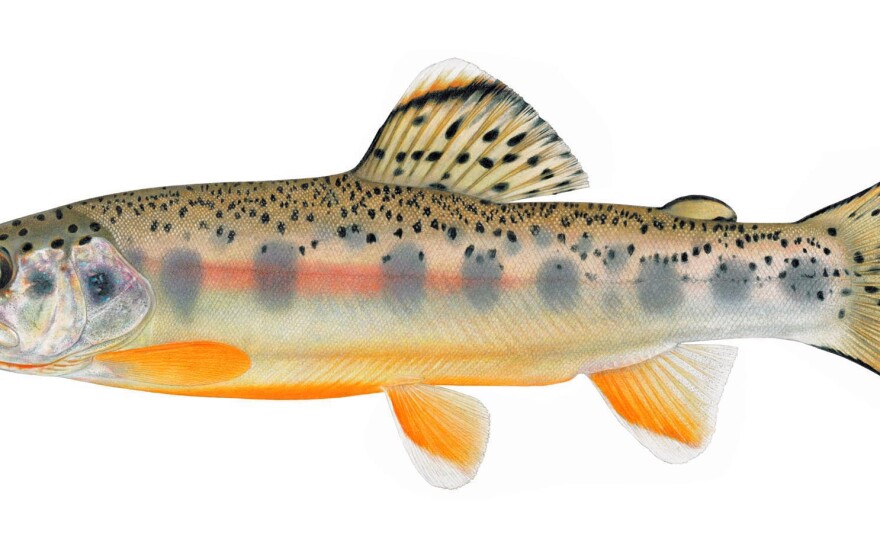Joseph Tomelleri is trying to discover a new species of trout. That's why he was just in Mexico, and that's why he'll be returning again soon.
Working as a scientist and an artist rolled into one, he's created upwards of 1,100 hyper-realistic colored-pencil illustrations depicting fish species for scientific books and magazines. He goes on research expeditions, documenting the distinguishing characteristics of each species, in some cases more faithfully than even a photograph could capture.
By combining what he sees with the naked eye with details gleaned from observation under a microscope, he fuses the seen and the unseen. He also does something a camera isn't capable of: He distinguishes imperfections and idiosyncrasies from universal characteristics that accurately represent a species, on the whole.
In the more than thirty years he's been doing this, he's developed techniques with colored pencils that help him capture that fishy aesthetic.
Tomelleri understands scales, and how they reflect light. He knows how to render the tiny, almost invisible hairline markings that subtly texture a fish's body.
Growing up in Kansas City, Kan., Tomelleri was first captivated by underwater life on fishing trips with his dad on Wyandotte Lake.
"I can remember catching about a half a dozen bullheads, and bringing them home. I was excited," he says. "We were going to eat fish, but by the time I got home I felt so sorry for the fish that my dad, he ended up taking them down to another lake and letting them go."
Nowadays, Tomelleri captures fish to save them.
He most often works with teams of scientists who have an interest in preserving a species and helping it to thrive.
In fact, his first assignment was for a book on Kansas fish, at a time when there were major concerns about drought and water levels in the region.
"I thought I'd do just a few and be done," he recalls. "Art that I'd done previous to that would start to bore me. But now, every time I do an illustration it feels like part of a collection, so I'm not bored with it and I can continue to do them."
That collection is now the largest collection of scientific drawings of freshwater fish in North America.







